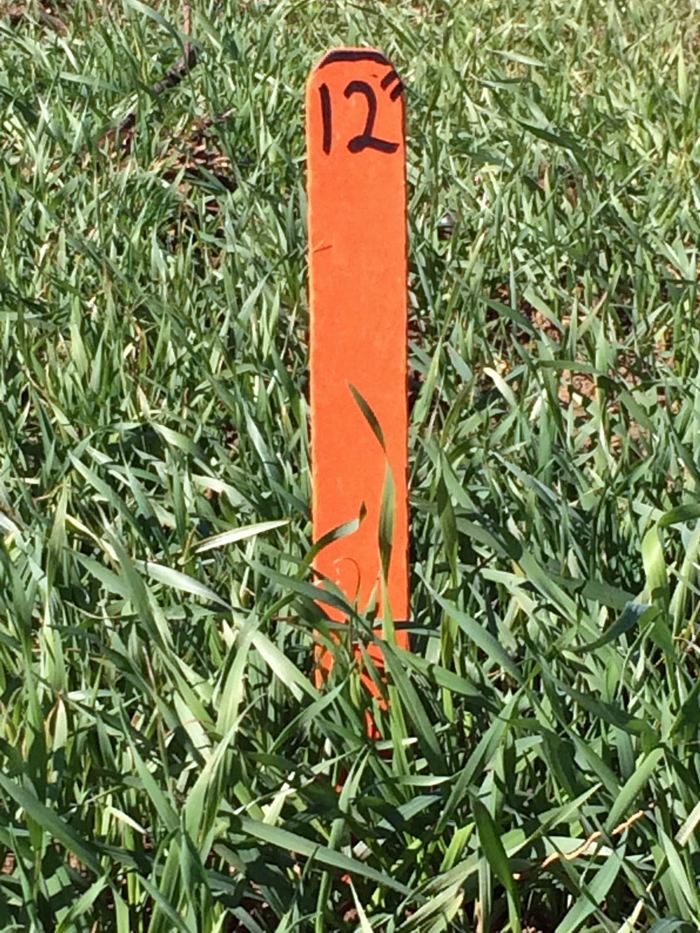
Winter feeding of the cow herd accounts for 40 to 50% of the total variable cost for producing weaned calves. Because winter nutrition is vital to both the calf’s health and the cows reproductive performance, adequate nutrition is essential.
Cool season grasses provide valuable winter and spring grazing when the warm-season perennial grasses are not growing.
- Rye is the small grain most widely used for winter grazing. Rye is more cold tolerant than oats, and some varieties produce more forage than either oats, wheat, or triticale. Producers should only plant varieties recommended for the southeast, due to disease issues and/or decreased production.
- Wheat is similar to oat in forage yield and palatability. Wheat is less susceptible to freeze injury than oat. Wheat should not be planted for grazing before October 15. Producers should only select Hessian-fly resistant varieties for grazing in the Southeast.
- Oat is very palatable, but is susceptible to freeze damage. Oat may be planted and grazed earlier than rye. In 2013, a new strain of crown rust was identified on all commercially available eastern oat varieties, with symptoms that ranged from mild infection to early plant senescence, so plantings may need to be scouted for rust and treated with fungicide applications, particularly if grown for silage or grain.
- Triticale is a hybrid cross of wheat and rye. It is well adapted to the Southeast. Triticale has the forage quality of wheat and the excellent disease resistance of rye. Triticale does not respond well to close grazing, however. If planted for grazing, consider blending tricale with ryegrass to provide a longer season of growth.
- Ryegrass is a valuable winter and spring grazing crop for use on flatwoods soil,s or the heavier sandy loams in Northwest Florida. Ryegrass may be seeded alone or with a small grain on prepared seedbed or overseeded onto permanent grass pastures.
Winter Legumes are important to forage production in Florida. They are frost tolerant and can supply highly nutritious feed during the winter and spring months. When properly inoculated, they supply nitrogen for their own growth and may provide 50 to 200 pounds of nitrogen for subsequent growing plants. More information on legumes is available in this UF/IFAS publication: Winter Forage Legume Guide
Grazing and Fertility Management
Allow plants to establish before grazing. This is, without a doubt, one of the most frequent errors made when cool season annuals are utilized. In fact, many farms overseed bermudagrass with rye or ryegrass and never remove the cattle. Allowing plants to develop a root system will improve drought tolerance and improve forage production, over the long term. Delay grazing cool season annuals until the forage is ready. The small grains (rye, wheat, oat, and triticale) need to at least 8-12 inches tall before grazing, and annual ryegrass at least 6-12 inches. Significant time and money are invested in annual pastures You do not want to damage the forage by over grazing. Animals should be removed for forage regowth when rye and ryegrass are grazed down to a height of 3-4 inches, and removed at a height of 3-5 inches for wheat or oat. More information on this topic is available in this UF/IFAS publication: 2014 Cool-Season Forage Variety Recommendations for Florida
Supplying adequate fertility can actually decrease the acreage needed to feed your herd. Winter pasture, in Northwest Florida, can benefit from split applications of fertilizer, just as your spring garden does. Applying 40-50 lbs per acre nitrogen (N) at planting or soon after is critical for tillering. A second application of N should be applied in mid-January to early February to increase winter and spring forage production. If winter annual legumes were used, and they make up 30-40% or more of the stand, then 25 lbs of N per acre is adequate. More information is available in this University of Georgia publication: Fertilizing and Grazing Winter Annual Stands
The author would like to thank the following University Extension Specialists for their input and expertise on these topics:
Dr. Ann Blount, University of Florida/IFAS, Extension Forage Specialist
Dr. Dennis Hancock, University of Georgia, Forage Extension Specialist
Dr.John Andrae, University of Georgia, Extension Agronomist-Forages
 0
0
